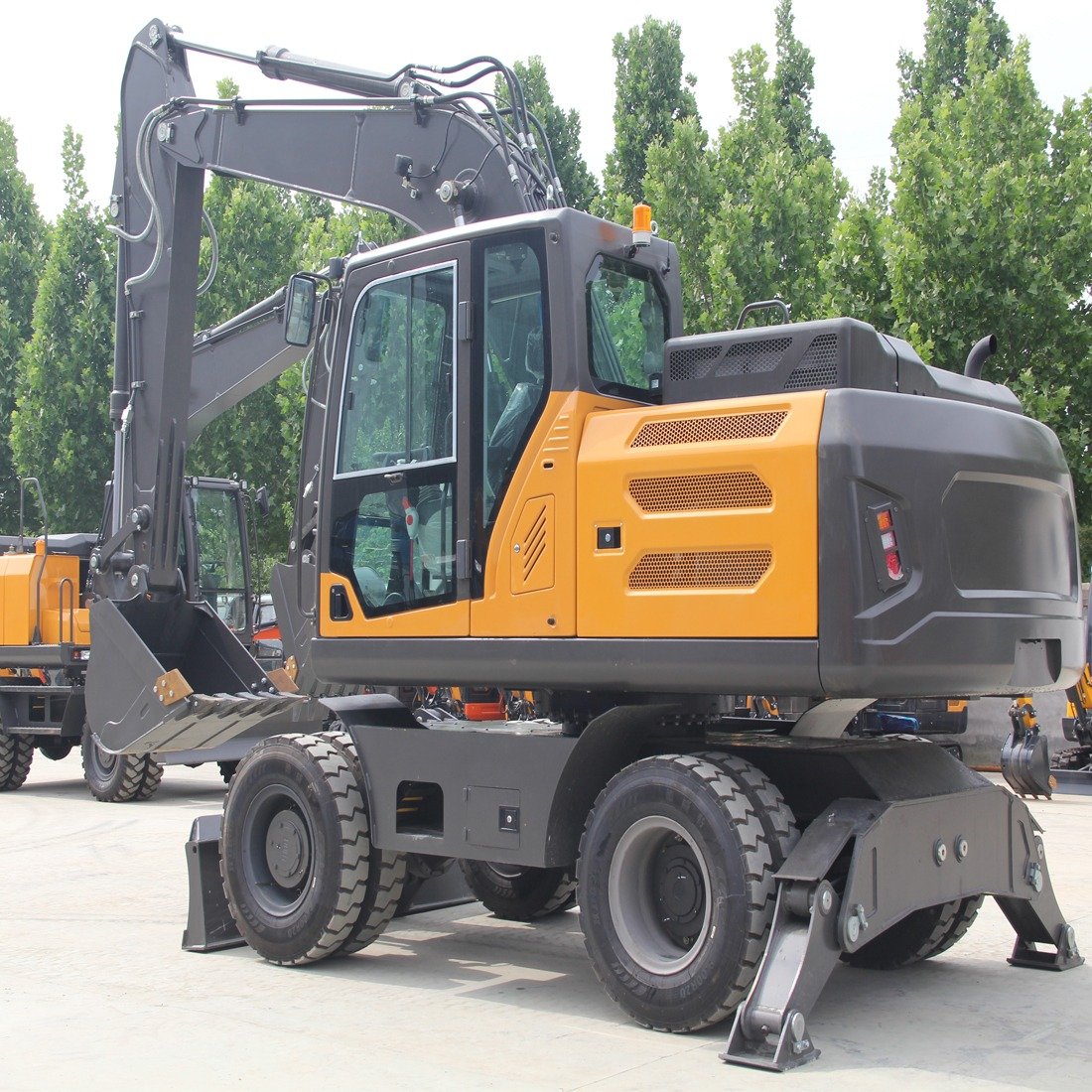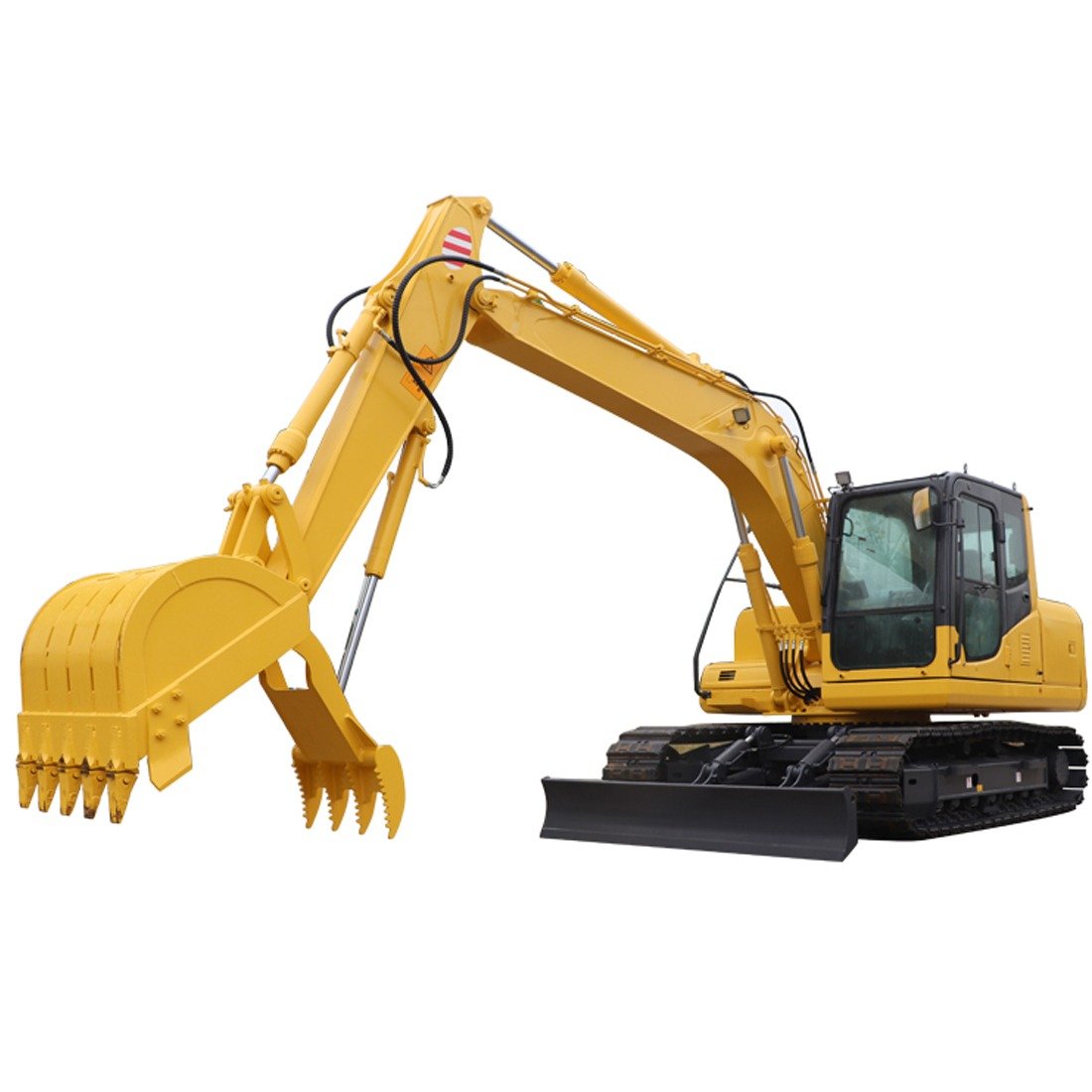Introduction
Wheeled excavators and crawler excavators are two common types of excavating machines, each with its unique characteristics. They have distinct advantages and applications, with the choice between them depending on the specific requirements of the job.
One significant difference lies in their chassis design. In this discussion, we will explore the structure of wheeled excavators, their history, development, and their limitations.

The Birth and Development of Wheeled Excavators
Wheeled excavators originated in Europe and continue to dominate the European market. They made their appearance even before the advent of hydraulic excavators, primarily serving urban construction projects, especially on city streets. Naturally, they incorporated technologies and components from trucks, such as drive axles, steering drive axles, gearboxes, and braking systems, often utilizing a 4×4 drive configuration.

Early wheeled excavators adopted truck axles
At the early stages of hydraulic excavator development, manufacturers predominantly utilized wheeled chassis, often in a 3-wheel configuration. This choice was driven by the need for stable load transfer to the ground during excavation. Rigidly connecting the chassis to four wheels on uneven terrain was impractical, as it posed challenges in maintaining stable support.

Early Liebherr L-300 excavator with a 3-wheel chassis
Soon, the introduction of swinging drive axles allowed one drive axle to pivot horizontally to a limited angle, usually not exceeding 10 degrees. This innovation enabled all four wheels to make contact with uneven terrain, rendering the 3-wheel configuration obsolete. Since then, wheeled and crawler excavators have coexisted, evolving alongside each other.

Common chassis structure with a front-loading bucket and rear support legs
However, as wheeled excavators need to comply with road regulations, including dimensions, width, height, axle load, and more, their tonnage remains restricted compared to crawler excavators. While crawler excavators have continued to grow in size or shrink, wheeled excavators are typically limited to a range of 10 to 25 tons. This range, though, is sufficient to meet the demands of urban construction.

Front and rear axles with the rear axle fixed to the chassis and the front axle capable of swinging
Like crawler excavators, wheeled excavators feature an undercarriage structure. They are connected to the upper structure via a central pivot bearing and receive hydraulic power and control lines through a central swivel joint. Wheeled excavators typically employ a 4×4 drive configuration, with both front and rear drive axles connected by a driveshaft. Usually, the front axle serves as the steering drive axle and the swinging axle, while the rear axle is typically fixed to the chassis.
Drive axles are powered by hydraulic motors, often with just one motor to increase torque, and the reduction is achieved through a gearbox. A 2-forward and 2-reverse gear system is common, with high gear suitable for road conditions, usually not exceeding 40 km/h, and low gear for operations, typically not exceeding 10 km/h.

Functional shovel and support legs for leveling
In the early days, wheeled excavators often lacked support legs, resulting in unstable operations and limited performance. However, the adoption of support legs improved lateral stability, enabling excavators to maximize their performance. Nowadays, wheeled excavators are available with four support legs or in a configuration with two support legs and a loading bucket.
Steering and Braking Systems

Wheeled excavators employ hydraulic cylinders for steering, enabling the wheels to turn and pivot. They also utilize disc-type braking systems. As wheeled excavator production volumes are significantly lower than those of crawler excavators, most manufacturers do not produce these components themselves. Gearboxes, axles, as well as steering and braking systems are typically supplied by third-party manufacturers, streamlining the manufacturing process.
To learn more about these machines, visit the official website https://unionforklift.com/product-category/excavator/.







